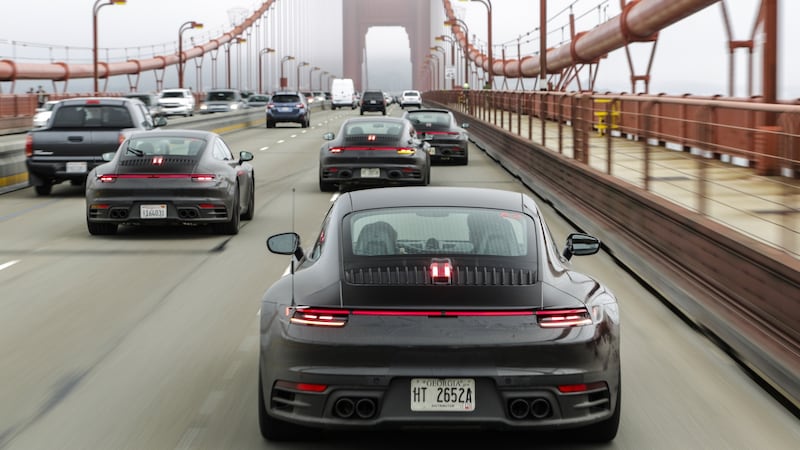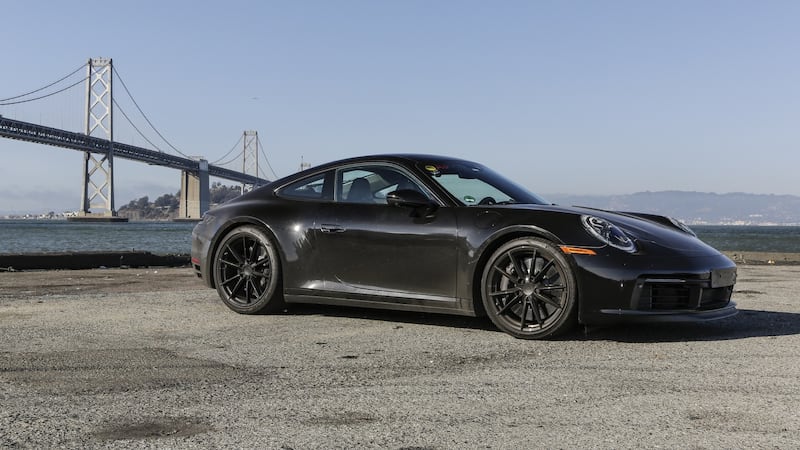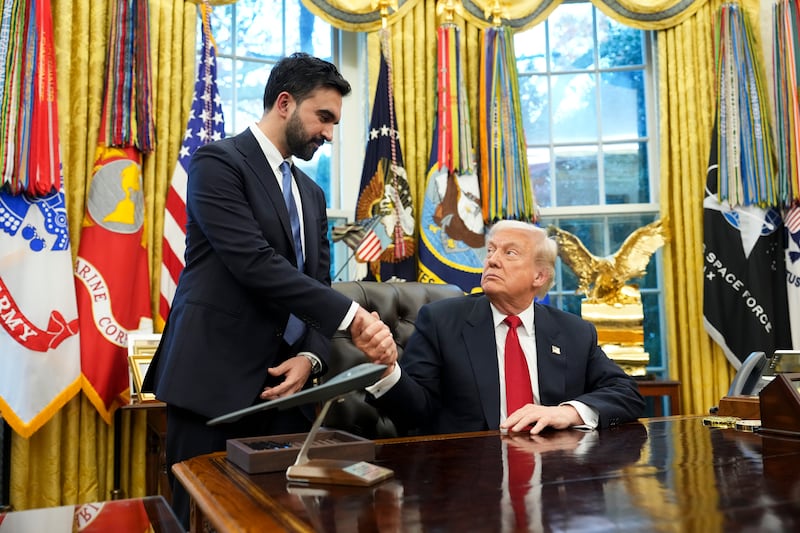There are four 911 Carreras parked in the underground garage in San Francisco. Actually there are more, but we're not allowed to talk about those. Porsche replaces its million-selling 911 sports car at the end of the year, and we're getting an early ride in pre-production cars as a team of engineers sign it off before its reveal at the LA Auto Show in November.
It's not your usual team of engineers – the line-up includes the big-hitters in the 911's development, with Alex Ernst, team leader testing; Matthias Hofstetter, director powertrain product lines for 911/718, and August Achleitner, vice president product lines 911/718 all here to make sure everything's right with the next 911. The west coast location is for the heat, height and tough driving conditions, the stop-start traffic, the aggressive acceleration, and, well, if you're going to be away for weeks, sometimes months at a time testing then it might as well be somewhere nice.
Every day the team collects terabytes of data from onboard cameras and sensors, the debrief at the end of the day taking hours. We might be crashing the testing party, but the ballast with a notepad doesn't stop the testing, though Ernst and his team are happy to chat about what's been keeping them busy for the past few years.


All the cars are Carrera S models, and coupes. All but one being tested is a PDK automatic, Porsche choosing to launch the car in LA in Carrera S, Coupe and PDK guise, with the standard Carrera following, it bringing the manual transmission to the line-up, while there’ll be convertibles, too, in both rear- and four-wheel drive.
The 911 is still a driver's car, and we want to keep this character in the future for as long as possible
That gearbox is the real talking point, gaining another ratio for eight speeds, it is counter-intuitive to think that the additional cog makes for more space within the gearbox case. That’s exactly what it does, for a reason other than simply the addition of another ratio. Porsche has future-proofed its sports car.
Achleitner confirms what’s been rumoured for a while, saying: “the rear of the gearbox is empty, in preparation for hybridisation”. The 911 boss is not yet convinced that the battery technology is ready for application in his sports car. His engine man, Hofstetter underlines this, saying: “The car is ready for hybrid, we can’t change the wind, but we can set our sails in the right direction.”
There’s space in the body for batteries, but Achleitner is quick to talk down when the hybrid will eventually come, though it would make sense around the car’s mid-life revisions in a few years’ time.
Not that the Carrera S needs a boost of battery or more performance, revisions to the 3.0-litre turbocharged flat-six engine, predominantly initiated to improve economy and emissions, including the addition of an exhaust particulate filter, have the happy side-effect of adding power.
In the Carrera S that means 450hp and 530Nm of torque, enough for a sub-4 second 0-100km/h and top speed in excess of 310km/h. That’s performance, which, only a few years ago, would have once been the preserve of Porsche’s flagship Turbo models.
Turbo and Turbo S models will follow the Carrera, the entry-level Carrera anticipated to have 385hp, while the Turbo S is rumoured to have in excess of 650hp. What’s yet to be confirmed is whether the purist, track-focussed high performance GT3 and GT3 RS models will switch to turbocharged engines, to allow them to pass ever-stricter emissions and consumption regulations.

Weight management has been key in the 992’s development, Achleitner saying that more aluminium has been used in its construction to help maintain the same weight as the outgoing car. More equipment will feature, too, with the 911 now featuring a wet mode as standard, which primes the safety and drive systems if it detects wet surfaces via acoustic sensors in the front wheel housings.
The creep of modernity, and convenience also reach the 992, with the adaptive cruise control gaining functions like lane keeping assist and lane departure warning systems, while there’s also the option of night vision – Achleitner an advocate of this after a heavy impact with a deer at night a few years ago.

He’s resigned to the addition of convenience drive systems, saying they’re what customers want, though says: “I think the 911 will be one of the last cars which will be offered with an autonomous system. The 911 is still a driver’s car, and we want to keep this character in the future for as long as possible,” adding, “as long as it’s possible to switch it off then it’s fine.”
Achleitner and his team evidently enjoy their driving, too, and as the convoy of 992s carve the canyon roads outside San Francisco it’s clear it’s lost none of its agility, feels hugely quick yet refinement has improved, particularly relating to tyre noise. We’ll find out just how successful Porsche’s changes have been early next year when we drive it, but for now the 911’s future looks to be in safe hands, and ready for what’s ahead.


















